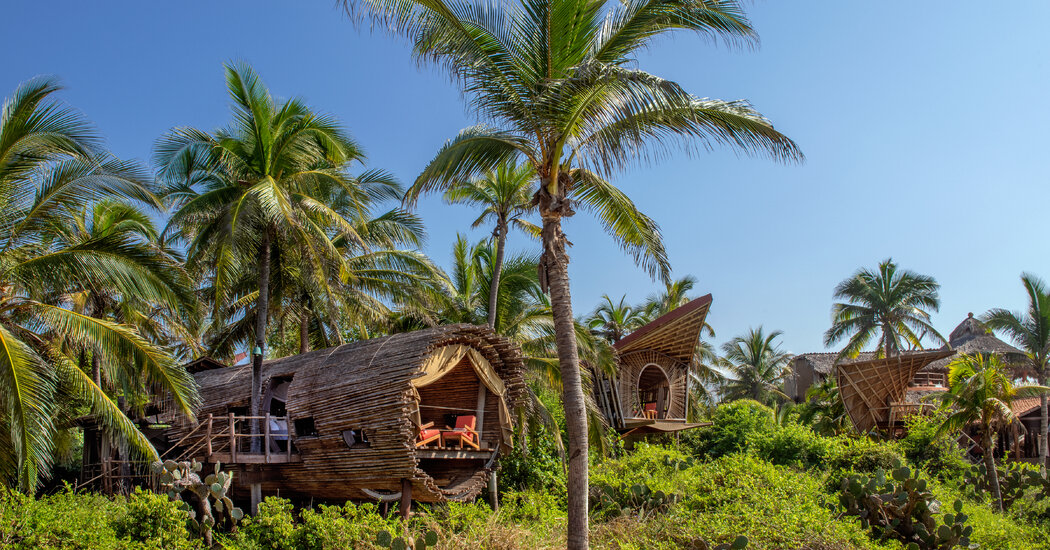Let’s buck the trend, a local marine biologist suggested.
In 2018, as the Maldives, a nation of nearly 1,200 islands in the Arabian Sea, continued its transformation into a luxury tourist destination, the country’s handbook for resort developers called sea grass meadows in the country’s shallow lagoons “aesthetically unappealing,” suggesting that it was “very important from the tourist perspective that the growth of sea grasses is eliminated.” Resorts on the islands were known to smother their meadows with sprawling sheets of plastic laid across the ocean floor in order to offer visitors aquamarine waters with endless sandy bottoms. Never mind that sea grass meadows are vital ecosystems for marine life and nearby coral reefs, or that they capture carbon in significant amounts from the atmosphere.
But at the 94-villa Six Senses Laamu resort, one Maldivian biologist wanted to “make a statement,” as Philippa Roe, the brand’s manager for regenerative impact, recalled.
Instead of killing off sea grass, the resort encouraged it to thrive, Ms. Roe said, and now has a lagoon with “different hues of green and dark blue, rather just a plain monotone crystal.” The sea grass has become a draw that gives the resort a leg up over others in the area, she said, as it attracts marine wildlife to the waters surrounding the resort’s over-water bungalows, where guests can see stingrays, sharks and turtles from the sun loungers on their decks.
The “perfect” tropical beach hardly needs to be described; it’s on the Instagram post, in the pages of a travel magazine: Fine white sand, coconut palm trees overhead, a gently sloping beach and unobstructed views out to sea. But in many cases — and especially at tourist destinations — that beach is entirely manufactured.
Now, a number of beach resorts around the world are embracing beachscapes in their more natural states. Planting or preserving native vegetation, especially between the shoreline and buildings, and focusing on a healthy overall ecosystem, strengthens natural defenses against the changing climate and provides habitat to native species, all while transforming travelers’ assumptions about what kind of tropical beach is worthy of a week’s vacation.
At the 20-bungalow Playa Viva resort on Mexico’s Pacific Coast, a native beachscape has been part of the property’s ethos since it opened in 2008. The resort has de-emphasized ocean views from the bungalows, instead framing sightlines to the…
Click Here to Read the Full Original Article at NYT > Travel…
